The Terracotta Army, one of the “Eight Wonders of the World”, is a world-famous ancient cultural relic located in Lintong District, Xi’an, Shaanxi Province, China. It is a large-scale funerary pit built for Qin Shi Huang, the first emperor of China who unified the country. This amazing army of clay soldiers not only showcases the superb military and artistic level of the Qin Dynasty (221-206 BCE) but also becomes a window for people around the world to understand ancient Chinese history and culture.
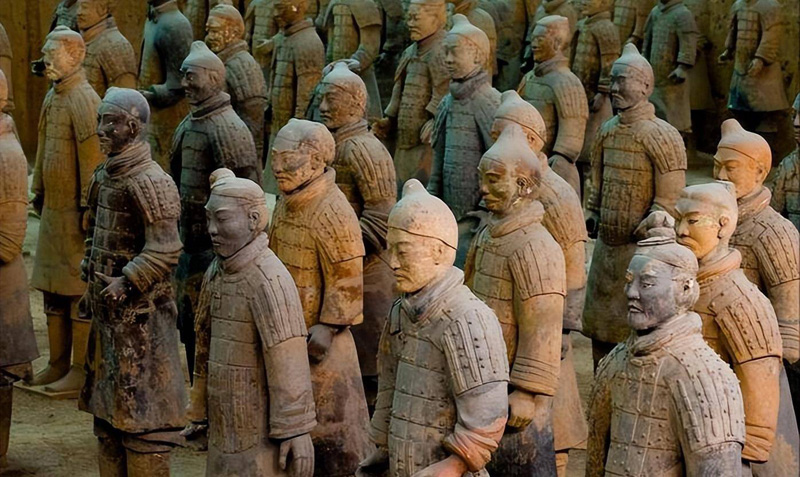
The Terracotta Army was discovered accidentally in 1974. At that time, a farmer in Shaanxi Province was digging a well in Lintong District, Xi’an, when he found some broken pieces of clay figures. These fragments aroused the attention of archaeological experts. After systematic excavation, a huge underground army composed of thousands of terracotta warriors and horses gradually appeared in front of the world, shocking the global archaeological community.
1. Historical Background
The creation of the Terracotta Army is inextricably linked to one of China’s most pivotal figures: Qin Shi Huang.
Unifier of China: He first unified China in 221 BC, founding the Qin Dynasty and proclaiming himself the First Emperor.
Centralized Power: He implemented far-reaching policies like standardizing writing, currency, and measurements.
Obsession with Immortality: Fearful of death, Qin Shi Huang desperately sought the elixir of life. Failing that, he commissioned the construction of a vast subterranean empire to rule in the afterlife.
The Terracotta Army was the elite garrison for this underground kingdom. Its construction began around 246 BC, employing over 700,000 laborers and taking nearly 40 years to complete.
2. What Makes It Astonishing
The true wonder of the Terracotta Army lies in its breathtaking detail and scale.
- An Army of Individuals: No two figures are identical. Artisans modeled them after real soldiers, creating unique facial features, hairstyles, mustaches, and expressions. You can see young recruits, seasoned veterans, stern generals, and even facial features suggesting ethnic diversity no longer present in the region.
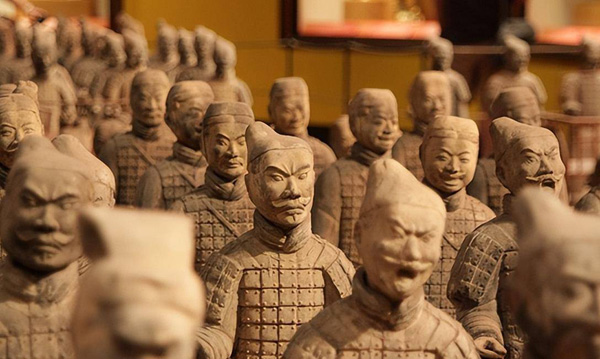
-
A Complete Military Formation: The army is laid out in a precise battle formation.
Pit 1: The largest, containing the main infantry force of about 6,000 figures. The sight is overwhelmingly powerful.
Pit 2: The most complex, featuring a mixed force of cavalry, chariots, archers, and infantry, demonstrating sophisticated military tactics.
Pit 3: Believed to be the command center, with a layout suggesting a high-level headquarters.
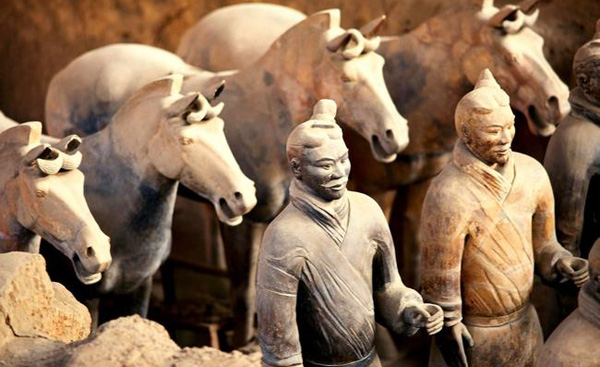
- Advanced Production Techniques: The figures were made using an assembly-line process. Bodies were mass-produced from molds, while heads and hands were sculpted individually and attached later. More remarkably, they once held real bronze weapons (swords, lances, crossbows), treated with a protective chrome coating that kept them rust-free and razor-sharp for two millennia.
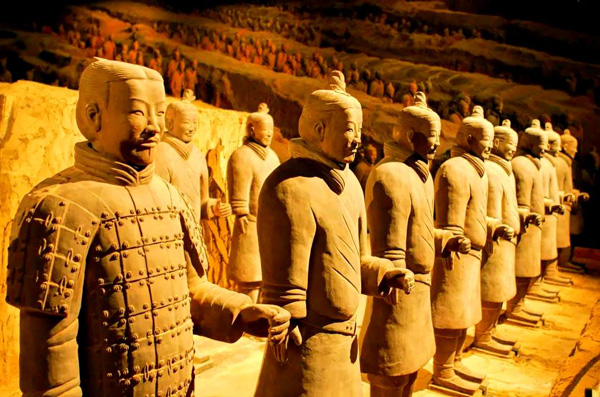
- A Once-Brilliant Palette: What many don’t know is that the Terracotta Army was originally painted. Artisans applied vibrant pigments like cinnabar red, malachite green, and azurite blue. However, upon exposure to air, most of the paint would flake off within minutes, leaving the terracotta hue we see today. This is a key reason why archaeologists have slowed excavation.
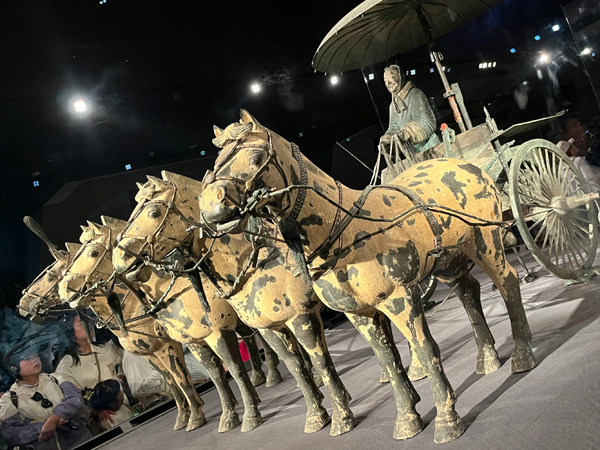
3. Historical Significance
The Terracotta Army is an important material evidence for studying the military, culture, art, and technology of the Qin Dynasty. It proves that the Qin Dynasty had a highly developed handicraft industry and a powerful military force. Moreover, it reflects the unique funeral culture of ancient China, which emphasized “treating the dead as the living”. Today, the Terracotta Army has become a symbol of Chinese civilization and an important bridge for cultural exchanges between China and the world.
4. Travel Guide for Visitors
Location and Transportation
The Terracotta Army Museum is located in Lintong District, about 35 kilometers east of Xi’an city center. Visitors can take Metro Line 9 to “Huaqing Pool Station” and then transfer to a bus or taxi to reach the museum. They can also take a tourist bus directly from Xi’an Railway Station or the city center.
Opening Hours and Tickets
- Opening Hours: Usually 8:30 AM – 5:00 PM (from March to November); 8:30 AM – 4:30 PM (from December to February). The closing time may be adjusted slightly according to the season.
- Ticket Price: About 150 RMB (approximately 20 US dollars) per person. Children under 1.2 meters tall can enter for free.
Tips for Visiting
- It is recommended to visit in the morning, as there are fewer tourists and the light is suitable for taking photos.
- Do not touch the terracotta warriors or take photos with flash, as this may damage the cultural relics.
- Hiring an English-speaking guide is a good choice, as they can help you understand the historical stories behind the Terracotta Army in detail.
- The Qin Shi Huang Mausoleum is near the Terracotta Army Museum. You can visit both attractions in one day.
